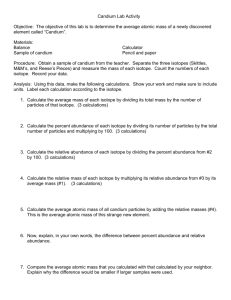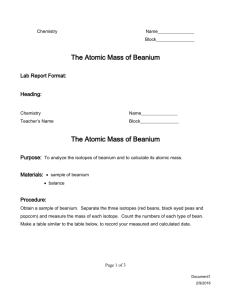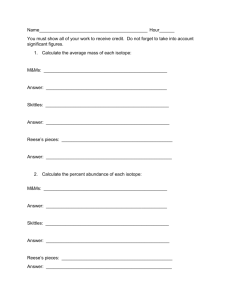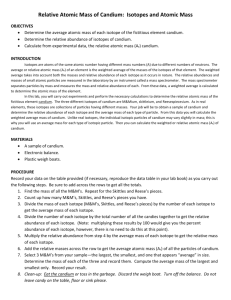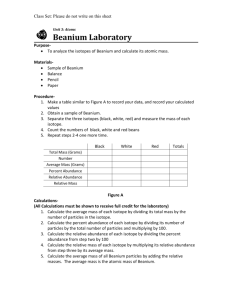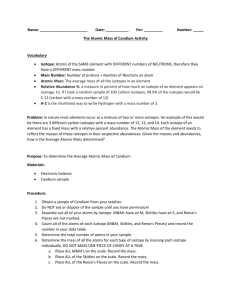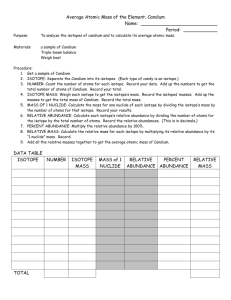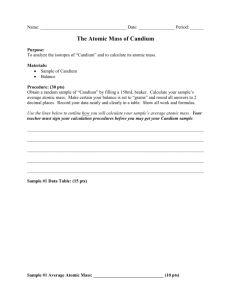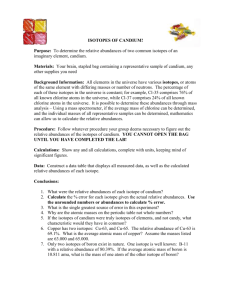The Atomic Mass of Candium
advertisement
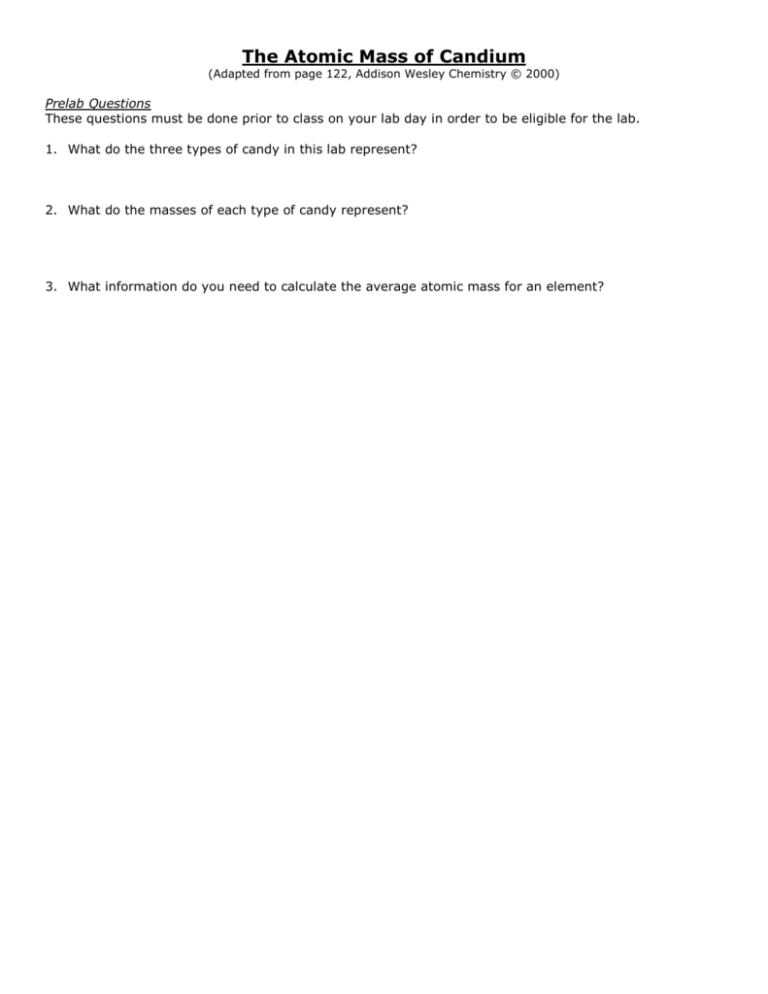
The Atomic Mass of Candium (Adapted from page 122, Addison Wesley Chemistry © 2000) Prelab Questions These questions must be done prior to class on your lab day in order to be eligible for the lab. 1. What do the three types of candy in this lab represent? 2. What do the masses of each type of candy represent? 3. What information do you need to calculate the average atomic mass for an element? The Atomic Mass of Candium (Adapted from page 122, Addison Wesley Chemistry © 2000) Purpose To analyze the isotopes of candium and to calculate the atomic mass. Materials Sample of candium Balance Calculator Lab handout Pen/pencil Procedure 1. Obtain a sample of candium. 2. Separate the three isotopes into groups and measure the mass of each isotope group. mass in grams. (Remember that the balances read to 2 decimal places.) 3. Count the number of particles in each isotope group and record the data. 4. Complete the data table by answering the analysis questions. Isotope group #1 Isotope group # 2 Isotope group # 3 Record the Isotope Totals Mass (grams) Number of pieces Average mass of 1 piece (grams) Percent Abundance Relative Abundance Relative Mass (grams) Analysis 1. Calculate the average mass of each isotope by dividing the mass of the isotope group by the number of particles in that group. 2. Calculate the percent abundance of each isotope by dividing the number of particles in the isotope group by the total number of particles and multiplying by 100. 3. Calculate the relative abundance of each isotope by dividing the percent abundance by 100. 4. Calculate the relative mass of each isotope by multiplying its relative abundance by its average mass. 5. Calculate the average mass of all candium particles by adding the relative masses. This average mass is the atomic mass of candium. 6. Compare the total values for average mass and relative mass. Explain why the totals differ and why the total value for relative mass best represents atomic mass. 7. Explain why there may be a difference between what you calculated as the atomic mass and what another group may have calculated. Explain why that difference is less if we look at a larger sample.
